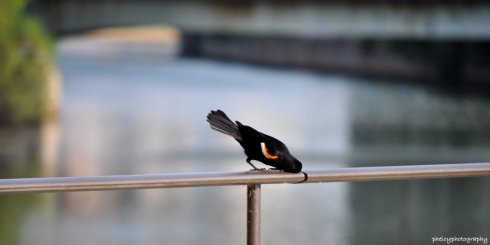When you are a child, you imagine animals pairing off neatly, like Noah’s menagerie coupling and marching up the gangplank to the chapel of bestial matrimony. Lovebirds are joined at the hip like a tween romance, and two swans form a perfect heart-shape with the teacup-handle arcs of their necks. Then you grow up, take a few biology courses, and discover that everything you thought was wrong. To your dismay, you realize that animals, even the kind that seem to exist in a monogamous marriage of sorts, cheat on one another constantly. Lovebirds get a little action on the sly; cuckoos can be cuckolded; monkeys can be real swingers; owls can get a little extra loving after midnight; house sparrows can be homewreckers; even swans, those regal symbols of romantic love swimming atop a wedding cake, are less backyard birds than backdoor men. In the avian world, it’s estimated that 90% of bird couples are socially monogamous (as opposed to 7% in mammals), but of those, 90% are sexually non-monogamous. Long under the spell of prudish human social norms and presuming fidelity among animals, scientists now seem to revel in revealing the promiscuity of the animal kingdom. But if polyamory is the true norm, that makes the monogamous animals the true weirdos, and therefore worth a closer look-see. What is the biological root of monogamy?
Without cracking open the scientific Ark of the Covenant that question implies, or the world’s largest can of worms that is human sexuality, let’s just talk about the birds. (And, this time, not the bees.) Can anything be said of that thin sliver of avifauna that is both sexually and socially monogamous? Yes, it seems. Most of the few birds that are both socially and sexually monogamous do it for the same reason many married couples do: for the kids. These are birds that live in such a hostile habitat that it takes every ounce of parental care to nourish their chicks. In other words, the parents would cheat on each other; they just don’t have the time or energy.
Seabirds in rocky, windy, or icy climes — like Emperor Penguins — make up the majority of sexually monogamous pairs, but one type of bird creates a hostile habitat for itself specifically so it cannot engage in extra-marital canoodling. That’s because in this species, the female is literally imprisoned behind a wall. It’s the Monteiro’s Hornbill of Namibia, and it is a master mason on the level of an Edgar Allen Poe antagonist. A mated pair of hornbills will scope out a suitable neighborhood to nest, preferably a stand of old-growth forest with large cavities in the trees. The holes may have been made by a fallen branch, or may have been carved out by a woodpecker. But however it’s made, it should be large enough for the female to enter and sit comfortably. She chooses carefully, because she’s going to be inside for a very long time.
After a loud and lengthy mating ritual involving glockenspiel-like harmonics between the pair, they prepare themselves for the hard work of raising the coming eggs. I have observed the following behavior in Great Hornbills at the Rio Grande Zoo back in Albuquerque: the female will enter the cavity and, working with the male, will wall herself in using a mortar made from mud, mashed fruit, and her own droppings, using her enormous beak as a trowel. The work takes no more than a few days, and sometimes only a few hours. When finished, there is only an aperture large enough for the tip of the female’s beak to poke through: the only window to the outside world, with its fresh air and the supply of fresh figs and berries the male hornbill will deliver throughout the day. A few days after the mortar is set, the first of five eggs is laid, and the female will undergo a complete molt and construct a crude insulating nest with her own feathers. While the male ferries fruit back and forth to the female, she sits in the dark, stark naked and sitting in a pile of her own feces, breathing stale and fetid air and eyeing her pinhole of sunshine in the wall of her self-made prison for over a month and a half.
Not exactly a model animal to promote monogamy, but there you go.
Why does the female hornbill cloister herself in the confines of a tree? Protection from predators might play a part, but a canopy-dwelling carnivore would have little trouble prying open the dung-heap wall of the nest. Primarily, the wall seems to exist to protect her from the unwelcome advances of other hornbills. Like the proverbial princess in a tower, she is completely removed from the dating pool. Meanwhile, everything else in the hornbill’s life seems to be made a little more difficult; the male must work tirelessly on the outside to support his mate and no other, and the female’s solitude, not to mention her nudity, makes her particularly unavailable. What is most remarkable is that she must store sperm from the male for a week or more before fertilizing her eggs while the pair chooses and builds their ideal nest, making the Monteiro’s Hornbill a prime candidate for promiscuity; there are many chances during that week or two for her to gain the sperm of a more attractive hornbill. Yet no genetic evidence of tomfoolery has ever been found; in fact, the Monteiro’s hornbill seems to be a rare, and perhaps unfortunate, case of supreme faithfulness. A super-expensive reproductive system, wherein the male has no time for extra families and the female is completely dependent on a loyal mate for food, seems to ensure near-total fidelity in this desert bird.
There is, in my view, a more poignant aspect of this marriage, lest I give you the impression that hornbill mating rituals involve some bird equivalent of Stockholm Syndrome. The hornbills have established a system of reproductive control which has also forced them physically apart as much as it’s made them co-dependent. Not every bird engages in much physical affection, but here is one species in which the male and female are distanced entirely and unable to perform any bonding rituals besides the transfer of food. For 45 days at least, the most that one will see of the other is the tip of its beak. A fig is a kiss, a klok of the great bill is a hello, and then they are separated again. Though the male has free range of the outside world, he is as distant from his wife and children as a migrant worker sending home money orders to a distant country, or the man working three jobs to feed his family and who can therefore never seem them by daylight. Though the female is safe, she lives to wait, her world projected on her dark wall as a camera obscura. As the saying goes, So close, and yet so far. The battle of the sexes, in which the male and female of a species compete to spread their own genes further, may have found a truce, but the costs are proximity and affection and freedom. Bound together by matrimony, the hornbill finds itself imprisoned and estranged from its spouse. For a bit of security, we suffer the dooms of love.






April 13th, 2011 at 8:14 am
Hagioscopes and Hornbills
Nice work.
There is an interesting human analog in history… humans physically walling themselves up to demonstrate their commitment to their one true love, and to keep from being tempted or distracted by other possible true loves. They were “anchorites” (or “anchoresses,” as the case may be):
courseweb.stthomas.edu/medieval/julian/anchoress.htm
April 13th, 2011 at 9:29 am
GAH. Can you maybe tell me these amazing things BEFORE I write the post? Because this would have changed everything.
April 13th, 2011 at 10:16 am
The “anchoress” phenomenon is incorporated to great comedic effect into Christopher Moore’s Fool. Let’s just say that the small wall opening afforded the anchoress does not guarantee celibacy or monogamy.
April 13th, 2011 at 12:30 pm
So, this would be some kind of “Minority Report” thing, with “pre-blogs” who anticipate your QB entries?
April 13th, 2011 at 1:27 pm
And here I was just going to make a Pyramus & Thisbe reference, but decided it was too dorky.
Also, yes. I need comments before the blog itself. The Quantum Biologist is going full Wiki.
April 13th, 2011 at 1:44 pm
I like the Pyramus & Thisbe reference… and to bring it full circle, here’s a picture of a hornbill eating a red mulberry.
http://www.sunnyside.go2lk.com/gallery/displayimage.php?album=2&pos=12
BTW, your intellectual hyperlinks in this blog are already way, way past anything Wiki has.
April 13th, 2011 at 4:37 pm
I truly enjoyed your blend of romance, research, and poetry in this essay. And then I read the comments! I studied anchorites as and undergrad and I’m embarrassed not to have made that connection while I was reading your post. Anyhow, love your style.
April 13th, 2011 at 8:11 pm
Thank you! Don’t be embarrassed; I didn’t even know about them. Then I read up on anchorites, and found very little history of them being self-imprisoned romantics. Maybe you can tell me otherwise, but they seem mainly to have been ascetic hermits of both sexes proving a faithfulness to their god, rather than a corporeal husband. So, spiritual hornbills, perhaps, but a biological dead end.
April 14th, 2011 at 4:45 am
The anchoresses were certainly not using their reclusion for physical procreation, but as nuns they did wear a ring to signify their marriage to Christ and their seclusion was certainly also intended to avoid and prevent temptation. They were not at all hermits, as they had an oculus specifically for conversing with the public. But you’re right… biologically it was a dead end. This is why one never meets anyone with the last name of “Anchorite.”
April 16th, 2011 at 8:10 am
re: Pale Male’s polyamory
gothamist.com/2011/04/03/pale_male_embroiled_in_jerry_spring.php
November 13th, 2011 at 9:27 am
Great!